 Dan Adelman on the Thomas Happ Games production.
Dan Adelman on the Thomas Happ Games production.
☆ NintendObs Weekly – Monday, September 5, 2016 – Sunday, September 11, 2016.
Nintendo eShop Developer Discussion: Axiom Verge
Dan Adelman discusses the Metroid-inspired adventure.
Version française ici : Les entretiens du Nintendo eShop : Axiom Verge. 😉
09/09/2016
Now available to download from Nintendo eShop on Wii U, Axiom Verge is a retro-inspired action-adventure game created by one man – Thomas Happ. In this interview from gamescom 2016, business partner Dan Adelman discusses the game’s inspirations, unique gameplay mechanics and the incredible story of how it came to be.
Nintendo of Europe: Firstly, thanks for joining us today. For those who aren’t familiar with you, could you please introduce yourself?
Dan Adelman: Hello! My name is Dan Adelman, and I’m the business half of the Axiom Verge team. Axiom Verge was entirely created by one guy, Thomas Happ, who did all of the code, the art, the animation, the music, the design – everything – and so I’m working with him, helping with all the other elements of releasing a game, like the business and marketing side. Before working on Axiom Verge, I was actually an employee of Nintendo of America for about nine years, so some Nintendo fans may have read my name in Nintendo news in that capacity.
NoE: How did you meet up with Tom and start working on Axiom Verge?
DA: When I left Nintendo of America, I made an announcement to the world that helping indie devs with the business side was the kind of thing I wanted to be doing, but I wasn’t sure who would want to work with me. I consider myself very lucky because Tom actually reached out to me, probably about a month after I made my announcement, and we got together and had lunch. We talked about the project, and he actually sent me a build of the game ahead of time so I was able to play it, and it was fantastic.
I was hoping very hard at that lunch that we’d hit it off, and we did. In my opinion, it worked out to be a very good match, because he’s an expert on every area of the games business…except for the business part. (laughs)
NoE: Before we go any further, please could you tell us what kind of game Axiom Verge is?
DA: Sure! Axiom Verge is a 2D action-exploration adventure game. You play as Trace, a scientist who gets caught up in a lab explosion, wakes up in an alien world, and has to understand how he got there and what he’s supposed to be doing there. He starts to hear a voice from a creature that’s communicating with him telepathically, and so from there he goes off and explores this alien world.
The game’s visuals have a very retro style – it’s very evocative and took a lot of inspiration from a lot of classic games. Metroid is probably one of the more obvious influences, but there’s also a lot of influence from games like Commando(1), Rygar(2), Blaster Master and Ninja Gaiden. For fans of those retro games and people who buy a lot of Virtual Console games, they may notice a lot of those inspirations in Axiom Verge.
NoE: So you could say Axiom Verge has a lot of prestigious influences. How does the game build upon those influences to create an old-school game for the modern age?
DA: When Tom started working on Axiom Verge, he was actually trying to deconstruct those retro games, more as a hobby, just to see, “What if I could take one part from this game and another part from this other game, and see if they work together? What would work well? What wouldn’t work well?”
It grew from there. Once Tom had that foundation, once he’d decided on putting the game together in the style of Metroid – where there’s a world map that’s hidden from you, and you gain these abilities that give you access to new areas – he then wanted to add some new things on top of it that hadn’t been seen before. One of the more unique aspects of the gameplay that emerged from that is the glitch mechanic.
One of the tools you get in the game is called the Address Disruptor, which forms these ‘glitches’, kind of like in the old days when dust would get into the game cartridge. There are other ways that these sort of glitches would happen, too. For instance, Tom used to load up one game and then swap out the cartridges while the console was still turned on, just to see what would happen. The game that was loaded in memory was looking for some information on the cartridge in a certain place, and so he just liked to see what would happen if you broke the games. He wanted to put that into Axiom Verge.
NoE: And it gives it that authentic feel, as well.
DA: Absolutely, yes!
NoE: Did it fool people, though? Did you find people saying, “This game’s broken!”?
DA: That actually happened to me one or two times when I was testing the game! Now, I’m very familiar with every little bit of the game, so I know what’s supposed to be there and what’s not, but there were a couple of times when I had to call things out. “I don’t know if this is a bug or if this is supposed to be in there.” (laughs)
NoE: So, how far does the game go with this glitch mechanic?
DA: The game introduces the mechanic – it shows you where to use it and how to use it – but, in order to finish the game, there are only a few areas where you absolutely need to glitch something. If you try to glitch enemies, they all respond differently, and so some players will choose to experiment and try to glitch every different enemy type, just to see what happens.
Other people will just play through it straight and only use the Address Disruptor in the few places where you absolutely have to. I always encourage new players to glitch everything and see what happens, because there are some interesting puzzles, or solutions to puzzles, that appear when you wouldn’t expect it.
NoE: So, with the Address Disruptor, you can change enemy behaviour?
DA: That’s right, yeah. It depends on the enemy – some become helpful to you if you glitch them, whereas some become much more violent towards you, and more dangerous.
NoE: It’s almost as if they’re saying, “Don’t glitch me!”
DA: Yes! (laughs) Other enemies just do weird stuff, so it’s interesting to experiment. There are a few in particular that are very helpful to you, and it’s exciting when you glitch something and it does something – and I’m being very ambiguous here because I don’t want to spoil anything – but then you follow it along and then you find, “Oh, there was a solution to a puzzle here, there’s a hidden item that I was able to find.”
NoE: Is there a particular glitch in Axiom Verge that you find to be your favourite? You can be ambiguous, we don’t want to give too much away…
DA: (laughs) Ah, let’s see. There are these creatures that zip back and forth, and they’re very scary! The first time you encounter them, you’re like, “Oh my goodness, what just happened?!” If you glitch them, they’ll still jump out at you, but they’ll also leave a trail that you can actually climb up on. If you glitch them on purpose and then feint so that they come after you, they’ll leave a trail that you can then climb up, walk across and reach places that might otherwise be difficult to access.
NoE: That’s really smart!
DA: Hopefully that’s ambiguous enough that people won’t know exactly where to use it.
NoE: But the take-home point is “glitch everything”.
DA: Yes! Just keep experimenting.
NoE: Understood! Now, we’d like to talk about how Tom approached the development of the game. Earlier, you said that he basically took on every area of the game’s development by himself.
DA: That’s right, yeah. So, the way he described it to me was this: he had a full time job as a game developer already, and the game development process for Axiom Verge took him five years. He was working on it mostly in the evenings and on the weekends, because he also had his day job to go to.
NoE: That’s incredible! So this was very much a passion project, then?
DA: Yeah, a lot of persistence. Tom was originally trained as an animator, and also as a programmer, so he kind of had both of those backgrounds. In his day job, he was acting primarily as a programmer, so in order to exercise his more creative side, he actually spent the first year just making art for the game. He would create the tilesets and the enemies, animate them, and then later he started putting the overall world map together.
But before writing any code, he actually did all of the art, all of the assets, and just had all of these creatures designed and made up. The reason he did it that way was…well, first of all, he was just enjoying making the art for it.
NoE: “It’s done when it’s done!”
DA: Yeah, exactly, but the other reason was that, while he was coding, sometimes he’d get into the zone, and if he then realised, “Oh, I need a creature here!” he’d have to step out of that flow, draw the creature, animate it, and then when he went back, he’d kind of broken up that rhythm.
NoE: It’s just like when you’re gaming. If you lose your flow, then you can get lost.
DA: Yeah, if you put a game down for a month and then you come back to it, you’re like, “Where was I going? What was I doing?”, so it’s the same kind of thing. Some people are able to create games in this really organised way, but yeah, Tom did all of the art first, then all of the programming later so he didn’t have to keep going back and forth and back and forth.
NoE: Did Tom also create all of the music for the game?
DA: Yeah, he did all of the music himself.
NoE: Was he a musician before?
DA: No, that’s the one thing he never had any formal training in. He just liked playing around with making music. He’s a very creative man.
NoE: It sounds like Tom had a very strong vision of what he wanted the game to be from the start. For example, the heads-up display(3) in the game is very minimalist in a similar way to Metroid and other retro games. Is that kind of aesthetic part of the design philosophy for this game?
DA: Yeah, I think a lot of Tom’s philosophy in terms of game development is about not overloading the player with information. So, for example, when you start out in Axiom Verge, you start off in the middle of a room, and you can try to go either right or left, and this actually takes inspiration from Metroid. You try to go to the right, and you’re blocked, so you have no choice but to go to the left and then, instead of having a tutorial that says, “Go here. Press this button to jump,” you’re basically in a place where you need to jump and you try all the buttons and you figure it out.
I know he put a lot of effort into teaching the player how to play without making it a tutorial, or writing up a lot of text, and so there were only like one or two places where I remember he struggled. When we brought the game to PAX East(4), we observed people playing the game. There’s one button – the L Button – that you can hold down in order to lock your position and aim in any direction, and at different events there were a lot of people who just didn’t get it. They didn’t pick it up on their own, so that was one instance where Tom actually had to add in a line explaining how to do it.
NoE: In achieving that perfect balance of having a difficult game, but one that’s also user-friendly and not unfair to the player, these events must have been really crucial to get some good feedback.
DA: Yeah, it was very helpful to go to shows like PAX East and just see where people were getting stuck or confused. There actually weren’t that many places where it happened – there were just a couple in particular – and so I would go to the shows and I would watch people, and I’d report back to Tom, and then he’d make tweaks to those areas where people just weren’t getting it.
I started working with Tom when the game was about 90% done, so the ending wasn’t there yet. It was mostly done, but not completely, and so I actually sent that build of the game out to a lot of my friends in the game development community.
A lot of them gave some really good feedback, and also very specific advice in a way that a layperson just wouldn’t do. So, for example, there was one area in the game where you have to jump off of a ledge, and one developer recommended implementing a five millisecond delay, so that after you reach the end of the ledge, you can still jump. It’s that kind of very specific advice that a regular player wouldn’t give you, like, “Oh, five milliseconds should do it!” (laughs)
NoE: Was it tricky to get the difficulty just right? Did you ever find people saying the game was too tough?
DA: Not too many. I think, at shows when people just pick the game up cold and they don’t know anything about it, they’ll fail a lot and give up too easily. I think when people play at home, and they sit down and try to digest it, they’ll learn pretty quickly.
NoE: It’s got a learning curve like all those classic games.
DA: Yeah, like anything else. One thing I actually really like about the game is that, if you take your time as you’re playing it, there’s usually a way to destroy the enemy in a way that means you’re still safe, or just avoid the enemy entirely.
So if you tried to run right through everything and just keep blasting like in Contra(5), you’ll probably get taken out pretty quickly, but if you think, “Alright, there’s an enemy up ahead. I’m going to climb up on this platform and shoot down on him. He can’t reach me up here!” If you notice those environmental cues, you can actually make things a bit easier on yourself. It’s only later in the game where you have to fight creatures at close-quarters.
NoE: But those areas are specifically designed to test all of your skills, right?
DA: Exactly, yes!
NoE: There are quite a lot of interesting and unique weapons and tools in the game. Other than the Address Disruptor, which we’ve already talked about, which ones are your favourites?
DA: Ah, let’s see. Not to give too much away, but there’s a lab coat which lets you pass through walls, and that becomes very valuable, especially later in the game. It’s a very interesting power-up. You’ll see a health upgrade, for instance, but you can’t get it because it’s contained between two walls and you’re like, “How can I get there?” Once you’re able to teleport through walls, that makes things a bit easier.
NoE: Do you travel back and forth and revisit areas quite a lot? If I saw something that looked interesting, would I be able to come back later to investigate?
DA: Actually, if you open up the world map, you can mark spots on it. So, if you notice something interesting in a certain area, you can mark it on the map and come back later. There’s also something very nice about going back to the very first area of the game after you’ve powered-up and you’ve got all this gear and equipment. You’ll see all these enemies that were once very scary and intimidating to you at the beginning, but now you’re so much more powerful and you can just destroy them. That’s always a good feeling.
NoE: Always! So, you can teleport through walls and you can glitch the world around you. Are there any other ways to alter the game?
DA: Yes, there’s a Passcode Tool that you uncover in the game. There are some silly, fun throwback codes that you can type into it. One of them is actually inspired by Metroid, so, if you type JUSTIN-BAILEY into the Passcode Tool, Trace will suddenly be wearing a pink leotard, so that’s a fun one. There are hidden clues in the game, and if you pick up on those clues, you can type them in at the right place and the game will reward you.
You know, it’s interesting. If you play through from the beginning and just plough through and get to the final boss and beat it, you could actually miss out on almost half of the game, I think. The thing is, none of these puzzles hit you over the head and say, “There’s a puzzle here, solve this!” It’s more, you just notice something slightly amiss, or you find some interesting information, and you think, “I bet if I type that in, something will happen.”
NoE: Axiom Verge features a dedicated Speedrun Mode. Does the Passcode Tool come in handy for that?
DA: The Passcode Tool is something speedrunners(6) won’t need quite as much, because they’re so amazingly talented. I try to do what they do and I can’t. They really don’t go out of their way to get a lot of the health and power upgrades, just because they’re able to do everything through skill alone. Personally, I need a good amount of health by the end of the game, but those people just won’t bother to go back to those hidden areas and get the extra power-ups and things like that. They don’t need that stuff unless they’re trying to do a 100% run.
NoE: They’re used to completing entire arcade games on a single life. So, have you seen the speedrunners doing anything that really surprised you?
DA: Yeah, there were a few. There was a guy who was doing a speedrun for charity, and Tom and I were commenting on it as he was going through it. He basically bypassed an entire area of the game which is normally required, because he was able to figure out a way to get access to an area that he wasn’t supposed to be able to. There were a few instances like that, and I would ask Tom, “Did you know that people could do that?!” and there were some where he was like, “Yeah, I put that in there to see if people could find it,” and then there were others where he was like, “No, I didn’t think that people would be able to do that”.
NoE: They’ve used his systems against him!
DA: (laughs) Exactly. So I’ve tried to emulate that but I’m not nearly as talented. I know my limitations.
NoE: So we can’t ask you for hints and tips on a speedrun, then?
DA: I could tell you how they do it. I couldn’t demonstrate it for you. (laughs)
I would say, the first time you play through, play through normally and get the whole story. The dedicated Speedrun Mode has two main features to it. One is that it removes all of the story elements, all of the cutscenes(7) and all of the dialogue, because speedrunners just want to speedrun. They get to a cutscene and they’re like, “Come on, come on!”, so it removes all of that. It also has a timer in the upper left corner of the screen, so you can see how you’re doing, and then at each boss it’ll record what your time was.
It’s actually a very speedrun-friendly game, even if you play it straight and don’t try to break the normal sequence of the game. There’s kind of an order in which you acquire things, like, “Okay, after I get this power-up, I need to get this power-up,” and the more you play, the more you become familiar with it.
NoE: It sounds like there are a lot of secret things hiding in nooks and crannies.
DA: If you play through it straight and get to the final boss, you’ll come away thinking that it was a very good, almost linear game experience. You’ve played it, you’ve found where you need to go next, you went there, you beat the boss. But I think, once you start recognising the puzzles – and a lot of the puzzles are very surprising and not obvious – then that becomes a very special feeling, like, “Wow, I discovered something that most people do not discover.”
NoE: You mentioned the JUSTIN-BAILEY Easter egg from Metroid. Are there similar Easter eggs from other series, or any references at all?
DA: There’s one area in the game, Kur, that takes a lot of inspiration from Rygar and Blaster Master. Tom actually wrote a blog post on his website about the Wii U version, and he showed some screenshots of Blaster Master, and then some from Axiom Verge, and you can very clearly see the inspirations.
NoE: Does Axiom Verge take advantage of Wii U’s unique hardware features in any way?
DA: Yeah, there are a couple of really important ways. My favourite is the fact that the map is on the Wii U GamePad touch screen at all times. I know that the first time I played Axiom Verge, I had to keep pausing the game to see where I needed to go next. A lot of modern games in this genre will just draw an arrow and say, “Go here next, and then go here next,” and it holds your hand. This game doesn’t do that. You figure out where you need to go next by looking at the map and saying, “Oh, where have I not explored yet? Let’s try to get there”. I was constantly going back and forth, and back and forth. Having the map always available makes it very user-friendly. The other feature, of course, is off-TV play, which is very convenient for people who have to share a TV – they’ll still be able to play!
NoE: Close your eyes, and imagine you’re trapped in a hostile alien world. If you could find any of Axiom Verge’s weapons or tools, which would you hope to find first?
DA: In a real alien world? I don’t know about in a real alien world, but I can say my favourite weapon in Axiom Verge is the flamethrower – it’s so cool! As for tools, I’d probably want to find the Address Disruptor. I would love to be able to glitch an alien world, walk through walls and things like that.
NoE: Okay, that last one seems like cheating! Any others?
DA: Let’s see. There is one thing we haven’t talked about yet, but there’s a drone that you can find in the game, and it can act as a bit of a scout and go out ahead of you, deal with some enemies, and take the damage so you don’t have to. I would like a drone. That drone would come in very handy.
NoE: We hear you’re also working on some other games at the moment. Could you shed some light on those projects?
DA: Sure! As well as Axiom Verge, I’m working on two other games right now. One of those games is called Chasm, and that’s also a 2D, pixel-art, retro-style action-adventure game. The way I often describe it is, if Axiom Verge is more like Metroid, then Chasm is more like Castlevania, so they’re kind of the two styles. We’re hoping that Chasm will be coming out soon – we’ve just got to the point where it’s fully playable from beginning to end, and we would love to see it on Nintendo platforms, absolutely. Now that it’s fully playable from beginning to end, we can add all of the secret sauce and polish that makes it go from a good game to a great game.
The other game I’m working on is called Mages of Mystralia, and that’s a very different game from either Chasm or Axiom Verge. It’s a 3D action-adventure game where you play as a girl named Zia who realises one day that she has magic abilities. In this game’s universe, magic is known to exist, but it’s very rare and it’s illegal. So, Zia goes into hiding, and learns the ways of magic on her own. The core mechanic is that you discover these runes which you can then combine in different ways to design your own magic spells, and so throughout the game you can potentially make millions of different spells and come up with something that’s uniquely your own.
NoE: Wow! I can’t even imagine the maths that must go into that.
DA: Yes, and there’s going to be a lot of testing, but there’s no way that we’ll be able to test every single combination. There are millions of combinations out there, and already we’ve seen, at different events and trade shows, people have been creating things that we didn’t expect them to do, and engaging with the game in ways we didn’t expect, so it’s very exciting.
NoE: That must be very rewarding, though – to see people use the tools you’ve given them in really unique and creative ways. So, with these games that you’re working on, we’re seeing a pattern emerge – you’re attracted to these very complicated games!
DA: (laughs) Yes, I’m mostly attracted to just really good, solid gameplay. That, to me, is number one. When a game just feels good to play and you’re like, “I could just play this game forever”. Those are the games I love to work with.
NoE: Are you hoping to release Mages of Mystralia on Nintendo platforms?
DA: We’d love to!
NoE: Fantastic! Is there anything else you’d like to add? Any messages for the fans?
DA: I’d just like to thank everyone for their patience, because I know a lot of Nintendo fans really wanted Axiom Verge on Wii U. It feels like Wii U is the platform that Axiom Verge was always meant to be on, and we’re really excited that it’s finally going to be there.
NoE: Thank you very much for your time!
Axiom Verge is now available to download from Nintendo eShop on Wii U.
— Nintendo UK News
Source: Nintendo UK.
At NintendObserver, the comments are on Discord.
Click on Community to learn more. 🙂
…
…Wanna play? Buy a Wii U.
And if you’ve already got yours, click on Axiom Verge for everything you need to know about the game. 😀
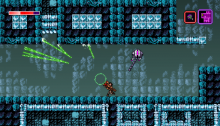
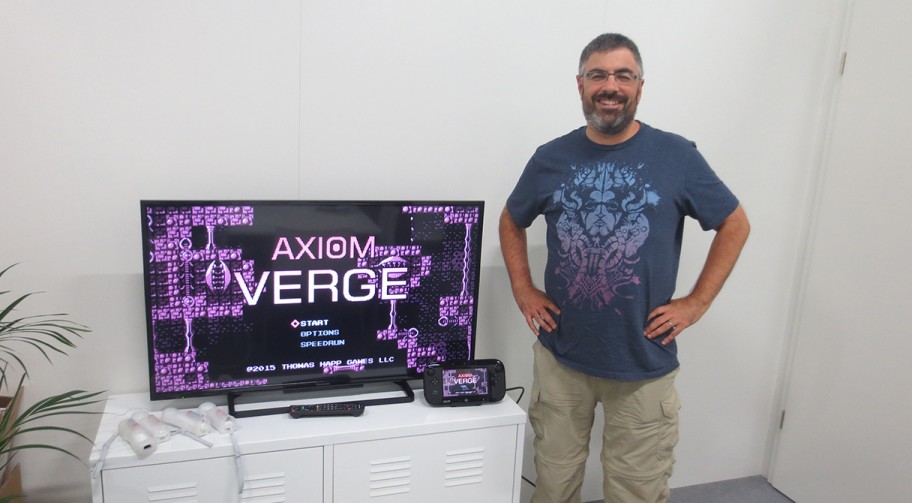
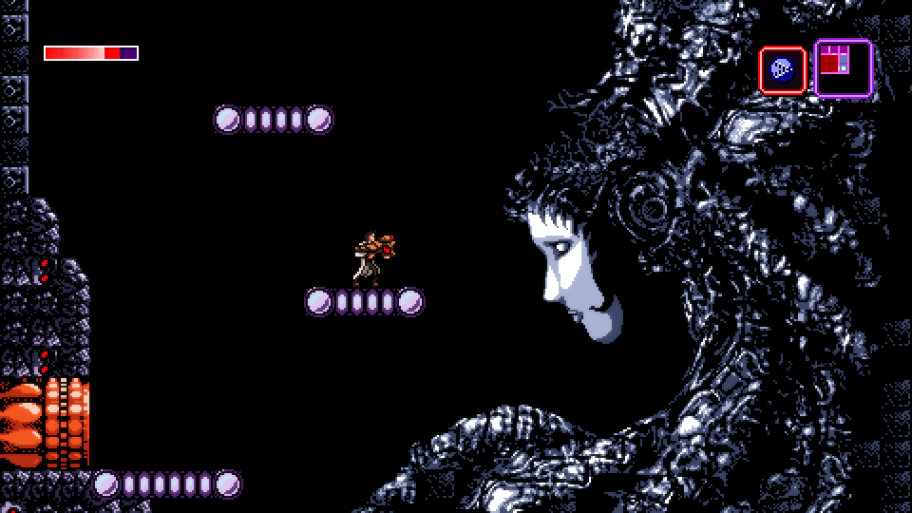
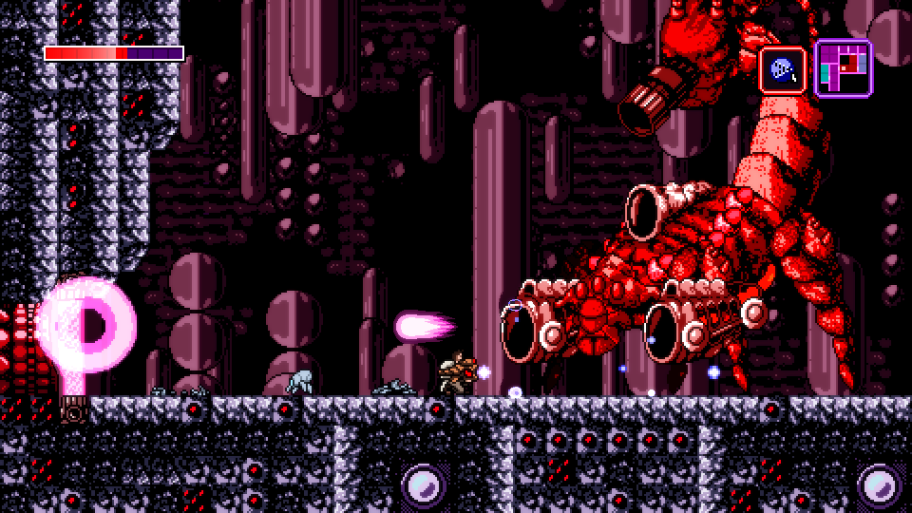
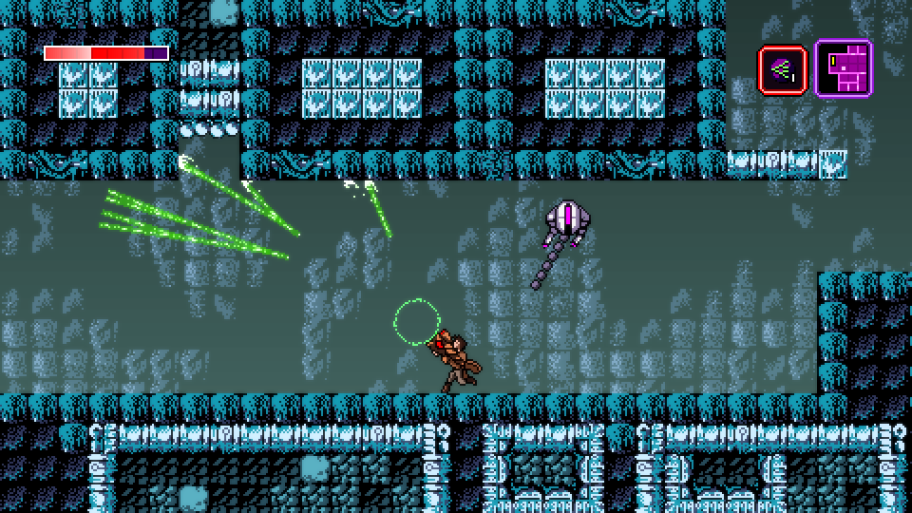
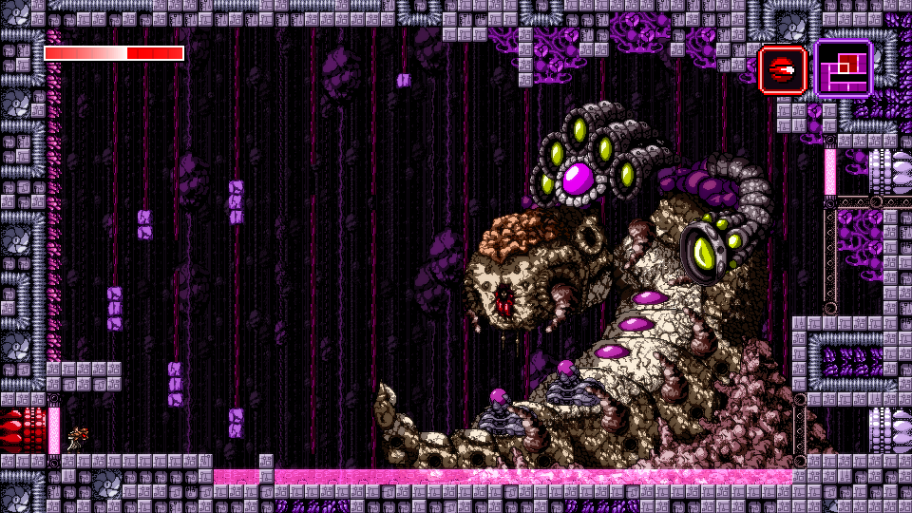
![SEGA: ‘Special Sound Interview for Mario & Sonic at the Rio 2016 Olympic Games! [Part 1]’](https://nintendobserver.com/wp-content/uploads/2016/06/p40yyjp-700x400.jpg)

